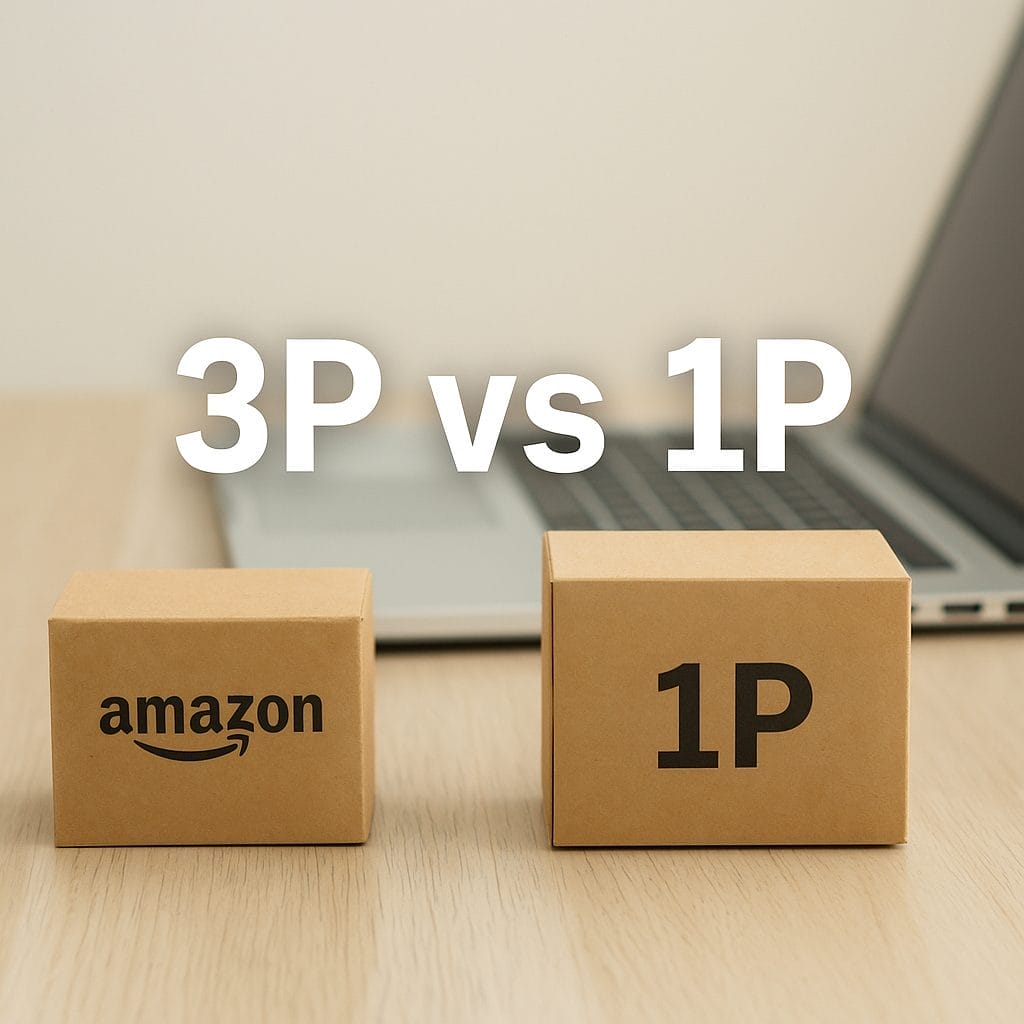Amazon 3P vs 1P: What Brands Need to Know in 2025


If you’re a brand selling on Amazon—or planning to—there’s one decision you can’t afford to get wrong: 1P or 3P?
Choosing between Amazon 3P (Third-Party) and Amazon 1P (First-Party) is more than just picking a logistics model. It’s a strategic business decision that impacts pricing, margins, control, branding, and how you grow in 2025 and beyond.
In this post, we’ll break down how each model works, compare the pros and cons, and help you decide which selling strategy aligns with your goals.
Amazon 1P (First-Party) means Amazon acts as the retailer. You sell your products wholesale to Amazon via the Vendor Central platform, and Amazon resells them to customers.
Think of it like a traditional retail relationship:
You’ll often see 1P listings marked as “Ships from and sold by Amazon.com.”
➡️ Learn more about Amazon Vendor Central
Amazon 3P (Third-Party) means you are the seller, listing products directly to customers through Seller Central. You can either fulfill orders yourself (FBM) or use Amazon’s warehouses (FBA – Fulfillment by Amazon).
In this model:
Most brand-first DTC sellers today choose the Amazon 3P model.
➡️ Overview of Seller Central features
Let’s break down the key differences that matter most to brand leaders in 2025:
| Feature | Amazon 1P | Amazon 3P |
|---|---|---|
| Control Over Pricing | ❌ Amazon sets price | ✅ You control pricing |
| Retail Margins | ❌ Wholesale margins only | ✅ Full retail margin |
| Brand Experience | ❌ Amazon owns listing and content | ✅ You manage content, A+ and Storefront |
| Data Access | ❌ Limited access to shopper data | ✅ Access to performance and audience data |
| Chargebacks/Deductions | ✅ Frequent | ❌ Minimal (unless FBA issues) |
| Promotions/Deals | ✅ Amazon-led | ✅ You control promotions |
| Speed to Market | ❌ Slower onboarding & PO timing | ✅ Fast, self-serve setup |
| Retail Relationships | ✅ Good for traditional buyers | ❌ May bypass channel partners |
The shift from 1P to 3P isn’t new—but it’s accelerating.
In 2024, more than 60% of Amazon’s GMV came from 3P sellers [source]. And in 2025, that trend is only growing as brands seek:
With the right strategy, Amazon 3P becomes a powerful DTC sales engine—not just a marketplace channel.
➡️ Business Insider: Why more brands are shifting to 3P
That said, Amazon 1P isn’t dead.
Large CPG brands or manufacturers with traditional retail operations may still prefer 1P if they:
But even these brands are increasingly exploring hybrid models—using 1P for core SKUs and 3P for launching new products or managing niche catalogs.
➡️ Amazon Help: 1P chargebacks and dispute process
Before choosing a path, ask:
If your answers lean toward control, data, and brand equity, Amazon 3P is likely the better fit.
Running an Amazon 3P business isn’t “set it and forget it.” It takes active management—across SEO, ads, pricing, inventory, and more. That’s where GoAmify comes in.
➡️ Amazon Advertising: Getting started with Sponsored Ads
We partner with brands to:
Whether you’re transitioning from 1P or starting fresh, we can help build a scalable strategy that aligns with your long-term brand goals.
Learn more about how we can help your Amazon business succeed!